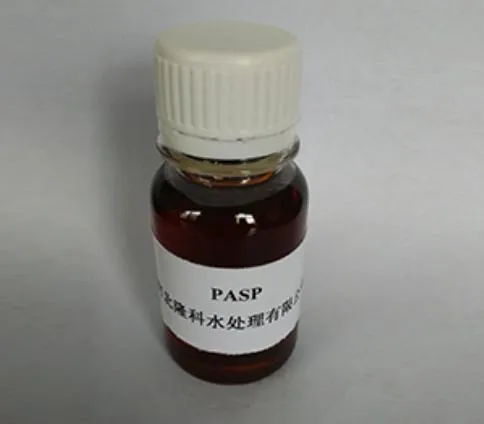Polyaspartic Acid: A Biodegradable Polymer for Sustainable Chemistry
As industries move toward more sustainable materials, polyaspartic acid (PASP) is gaining traction across sectors—from water treatment and agriculture to coatings and biomedical applications. This synthetic biodegradable polymer is known for its chelating ability, thermal stability, and environmental compatibility. Whether you're formulating scale inhibitors or developing high-performance paints, polyaspartic acid offers performance with a reduced environmental footprint.
This article explores the chemistry, applications, and advantages of polyaspartic acid, including its sodium salt form and molecular structure—all essential knowledge for technical buyers and formulators seeking alternatives to traditional polymers like polyacrylates or phosphonates.

What Is Polyaspartic Acid?
Polyaspartic acid is a synthetic polyamide that mimics naturally occurring proteins in structure and function. It is typically produced via thermal polycondensation of aspartic acid or maleic anhydride and ammonia, resulting in a biodegradable polymer with recurring succinimide or aspartate groups.
In industry, PASP is used primarily as:
A green scale inhibitor in water treatment
A chelating agent in detergents or cleaning products
A dispersant in pigment, dye, and mineral processing
A biodegradable alternative to traditional polycarboxylates like polyacrylic acid
Its performance is comparable to common synthetic polymers, but with significantly lower environmental impact.
Polyaspartic Acid Sodium Salt
The polyaspartic acid sodium nnu (often abbreviated as PASP-Na) is the most common commercial form of this polymer. Neutralizing the carboxylic acid groups (-COOH) with sodium ions (-COONa) makes the polymer water-soluble and more stable across a range of pH levels.
Advantages of the sodium salt form:
Enhanced water solubility
Better compatibility with other water treatment chemicals
Non-toxic and biodegradable
Functions well across wide pH ranges (6–10)
Resists thermal degradation (up to 200°C)
PASP-Na is widely used in:
Cooling towers and boilers for scale control
Detergent formulations as a builder/chelating agent
Agricultural fertilizers to improve micronutrient uptake
Polyaspartic Acid Structure
The polyaspartic acid structure is composed of repeating units of aspartic acid residues, connected through peptide (amide) bonds. Its backbone contains:
Carboxyl groups (-COOH), which provide chelation and ion exchange properties
Amide linkages (-CONH-), giving it thermal and chemical stability
Optional sodium ions (-COONa) when in salt form, for solubility
There are typically two structural forms, depending on the synthesis route:
1. α-Linked Polyaspartic Acid
Formed via direct thermal polycondensation of aspartic acid. It contains both α- and β-peptide bonds but is less controlled in molecular structure.
2. β-Linked Polyaspartic Acid
Formed via maleic anhydride polymerization followed by amination and hydrolysis. This route offers better control over molecular weight and structure, and often yields a higher-performing material.
The exact structure and molecular weight can be tailored during synthesis to match specific application needs (e.g., molecular weights from 1,000 to 10,000+ Da).
Applications of Polyaspartic Acid
Polyaspartic acid is valued for its biodegradability and versatility. Here are its most common application areas:
1. Ọgwụgwọ mmiri
PASP acts as a ihe mgbochi akpịrịkpa na corrosion control agent, especially in environmentally sensitive areas where phosphorus-based products are restricted.
Compatible with RO systems, boilers, cooling towers, and geothermal setups.
2. Agriculture
Used as a soil amendment na fertilizer additive to improve micronutrient availability.
Helps in controlled release of nutrients and reduces leaching.
3. Detergents
Functions as a builder in eco-friendly cleaning formulations.
Chelates hard water ions and prevents residue buildup on fabrics and dishes.
4. Paints and Coatings
In high-solids polyaspartic coatings, di-functional aspartic esters react with isocyanates to form fast-curing, UV-stable, high-gloss finishes.
Used in concrete coatings, automotive parts, and metal finishes.
5. Biomedical Materials
Its non-toxic and biodegradable nature makes PASP suitable for drug delivery systems, tissue scaffolding, and hydrogels.
Benefits of Polyaspartic Acid Over Traditional Polymers
|
Property |
Polyaspartic Acid |
Polyacrylic Acid / Phosphonates |
|
Biodegradability |
High |
Low |
|
Environmental impact |
Minimal (no phosphorus) |
Moderate to high |
|
Thermal stability |
Excellent (up to 200°C) |
Moderate |
|
Chelation ability |
Strong |
Strong |
|
Regulatory compliance |
Easily meets green standards |
Often restricted |
Polyaspartic acid checks the boxes for high performance na sustainability, making it a top candidate for next-generation formulations.
Polyaspartic Acid FAQs
Q1: Is polyaspartic acid biodegradable?
A: Yes. It breaks down naturally in soil and water, making it an eco-friendly alternative to many synthetic polymers.
Q2: What is the shelf life of polyaspartic acid sodium salt?
A: Typically 12–24 months when stored in a cool, dry place in sealed containers.
Q3: Can polyaspartic acid replace polyacrylic acid in all applications?
A: Not always. While PASP is more environmentally friendly, polyacrylic acid may still offer advantages in certain high-pH or extreme conditions. Product testing is recommended.
Q4: Is PASP compatible with chlorine and other biocides?
A: Yes. PASP is chemically stable and can be used alongside most water treatment chemicals, but compatibility testing is advised for specific systems.
Q5: Where can I buy industrial-grade polyaspartic acid?
A: Reputable chemical distributors, specialty water treatment suppliers, and polymer manufacturers offer PASP in both powder and liquid forms, often under custom or trade names.
-
Understanding Polycarboxylic Acids: Properties, Applications, and Future PotentialAkụkọJul.28,2025
-
Scale Inhibitor Explained: How to Protect Your System from Limescale and Hard Water DamageAkụkọJul.28,2025
-
Scale and Corrosion Inhibitors: Essential Chemicals for Industrial Water System ProtectionAkụkọJul.28,2025
-
Polyaspartic Acid: A Biodegradable Polymer for Sustainable ChemistryAkụkọJul.28,2025
-
Isothiazolinones: A Versatile Antimicrobial Class with Industrial Power and Regulatory ChallengesAkụkọJul.28,2025
-
A Deep Dive into 2-Phosphonobutane-1,2,4-Tricarboxylic Acid (PBTC)AkụkọJul.28,2025





